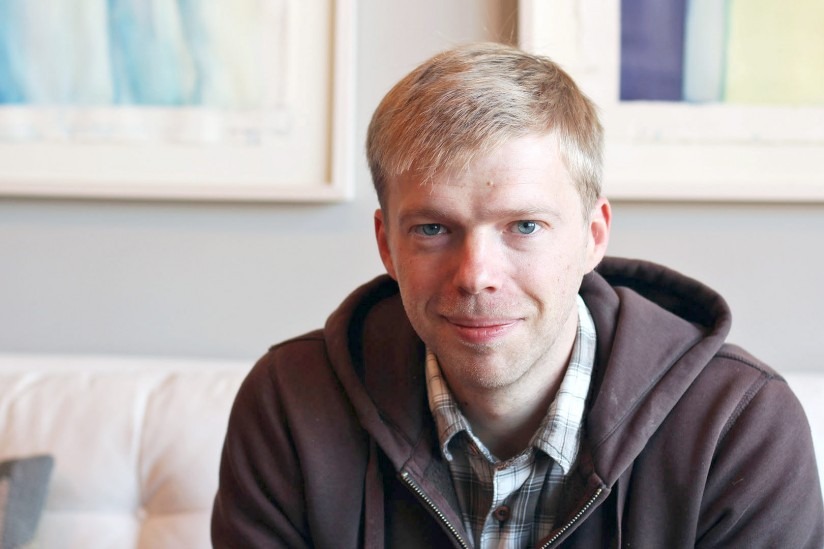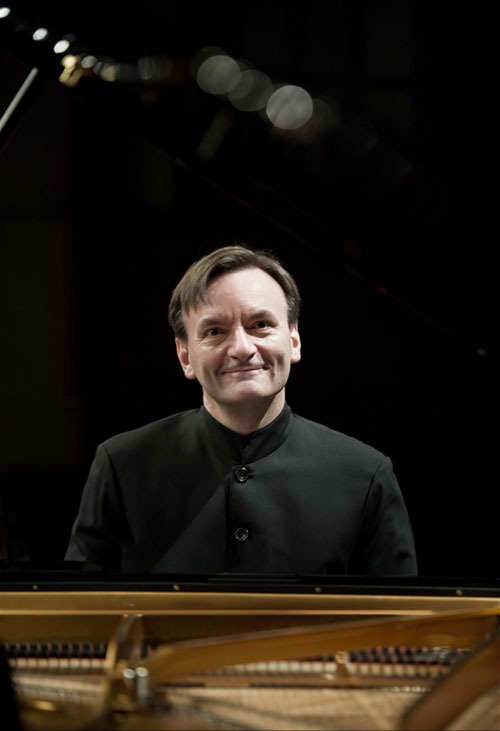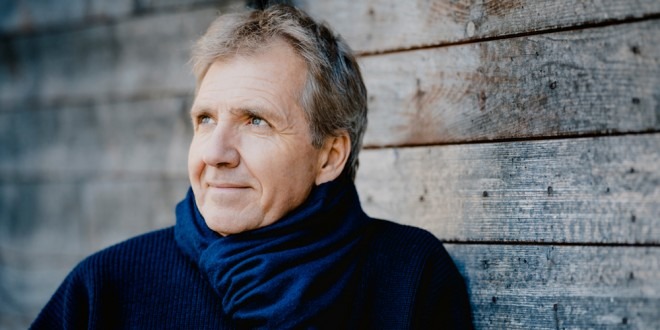the Nashville Symphony
An Artist’s Dream at the Schermerhorn
On the weekend of November 7-9 the Nashville Symphony produced a concert that featured Hector Berlioz’s Symphonie Fantastique (Op. 14), Felix Mendelssohn’s Concerto No. 1 in G Minor for Piano and Orchestra (Op. 25) with soloist Stephen Hough and Andrew Norman’s Unstuck, all conducted by visiting Maestro Thierry Fischer. The evening was somewhat eclectic but featured fantastic performances.

Since his arrival on the scene, Los Angeles based composer Andrew Norman has made some waves in the classic world, qualifying as finalist for a Pulitzer Prize twice (2012 and 2019) and with prestigious premieres including one of his children’s opera A Trip to the Moon by the Los Angeles Philharmonic. Unstuck was written on a commission from the Orpheum Foundation for the Advancement of Young Soloists and received its premiere in Zurich in 2008. In the program Norman described the way he derived the movement’s form from an inspiration he took from Kurt Vonnegut’s Slaughterhouse-Five:
For a long time this piece languished on my desk, a mess of musical fragments that refused to cohere […but] I realized that my musical materials lent themselves to a narrative arc that, like Vonnegut’s character, comes ‘unstuck’ in time. Bits and pieces of the beginning, middle and end of the music crop up in the wrong places like the flashbacks and flashforwards that define the structure and style of Slaughterhouse-Five.
The difficulty with Norman’s work is that it lacks the unifying elements that Vonnegut employs to maintain connection in the narrative organization (despite the surface incoherence); there is no foreshadowing, resolving reprises, thematic connections, or derived culminations to balance the apparent lack of formal integration. However, despite the formal challenges, some of those “bits and pieces” are really quite beautiful. The rhythmic complexity of the initial fast section was quite intricate, and the Webernian pointillism at some of the internal moments was equally remarkable, reducing the musical fabric to a kind of “tone color melody” or klangfarbenmelodie. At another moment, when the cellos are heard apart with a simple ascending gesture (played wonderfully by Kevin Bate and Xiao-Fan Zhang), the intimacy and directness was breathtaking. While this may not have been my favorite piece, I am enthusiastic to hear other works by Norman.
Felix Mendelssohn wrote his First Piano Concerto when he was in his early thirties and during a trip to Rome in 1831. It is a rather innovative work with the piano dominating from the very beginning and the first and second

movements are connected by a fanfare in the horns and trumpets, sounding in the Romantic distance before the piano transitions to the second movement. It is in this movement that Hough really shined. A polymath with unassailable technique, Hough’s interpretation brought the room into a languid reverie only to be rudely awoken by the fanfare (much closer now) that announced the third movement.
Hough tackled the third movement’s fast and joyous themes with abandon and Fischer kept the smaller orchestra up with him brilliantly. It brought to mind Hector Berlioz’s description of what happened to a piano after it had played this movement once too many times and its builder, M. Erard, attempts to repair it:
…try as he [Erard] will, the piano, which is out of its mind, has no intention of paying him any heed either. He sends for holy water and sprinkles the keyboard with it, but in vain—proof that it wasn’t witchcraft but merely the natural result of thirty performances of one concerto. They take the keyboard out of the instrument—the keys are still moving up and down by themselves—and they throw it into the middle of the courtyard next to the warehouse. There, M. Erard, now in a fury, has it chopped up with an axe. You think that did it? It made matters worse. Each piece danced, jumped, frisked about separately—on the pavement, between our legs, against the wall, in all directions, until the warehouse locksmith picked up this bedeviled mechanism in one armful and flung it into the fire of his forge, finally putting an end to it…
It was the image of the piano dancing, jumping, frisking about that Hough’s delightful performance brought to mind. I only wish that he’d performed an encore.
After intermission, the stage of the Schermerhorn was made full with Berlioz’s augmented orchestra, and extended offstage with special bronze church bells brought in from the Dallas Symphony. It was in Berlioz’s Symphonie Fantastique that Fischer left a significant interpretive footprint. Written and premiered in 1830, Berlioz’s innovative work is program symphony that relays an external narrative which, in Berlioz’s words, “…develop[s] various episodes in the life of an artist, in so far as they lend themselves to musical treatment.” Further, Berlioz unified the five movements of the piece with a recurring theme called an idée fixe which represents the artist’s love for a woman, “By a strange anomaly, the beloved image never presents itself to the artist’s mind without being associated with a musical idea, in which he recognizes a certain quality of passion, but endowed with the nobility and shyness which he credits to the object of his love.”
Thus the work becomes an essay in Berlioz’s unique genius for orchestration and thematic transformation—we hear the theme in the first movement, encounter her again at a waltz, in the country, and then in an opioid-induced dream in the last two movements.

Overall, it seems that Maestro Fischer was, quite appropriately, looking to emphasize the nostalgic, dreamy and distantly Romantic aspects of Berlioz’s work. The harp glissandos in the second movement’s waltz and the English horn and oboe duet in the third movement pastoral were notably exquisite for the nostalgic legato in their parts—special mention here goes to Licia Jaskunas (harp), Roger Wiesmeyer (English Horn) and Titus Underwood (oboe). Fischer also brought a similar interpretation to the Fourth Movement’s “March to the Scaffold.” Typically, the movement is emphatically staccato in an effort to maximize the terror. However, Fischer stuck to the program which describes the artist in a lucid, dream-like state :
Convinced that his love is spurned, the artist poisons himself with opium. The dose of narcotic, while too weak to cause his death, plunges him into a heavy sleep accompanied by the strangest of visions. He dreams that he has killed his beloved, that he is condemned, led to the scaffold and is witnessing his own execution. The procession advances to the sound of a march that is sometimes sombre and wild, and sometimes brilliant and solemn, in which a dull sound of heavy footsteps follows without transition the loudest outbursts. At the end of the march, the first four bars of the idée fixe reappear like a final thought of love interrupted by the fatal blow.
In this way the events of the last two movements are experienced from within a “heavy sleep” and under Fischer’s baton it was hazy like a dream…or rather a nightmare. Importantly, the effect didn’t undermine the terror so much as distance it almost as an out-of-body experience. The effect was further heightened in the final movement when the idée fixe appeared at the witch’s dark prayer meeting cackling and shrieking through Katherine Kohler’s E-flat Clarinet, but yet enmeshed within that dream-like state.
It was wonderful to hear this chestnut of the repertoire interpreted in a new way, and caused me to somewhat lament the homogeneity of interpretations that one often hears from the conductor’s podium –Fischer took a chance in Nashville and we were rewarded.



